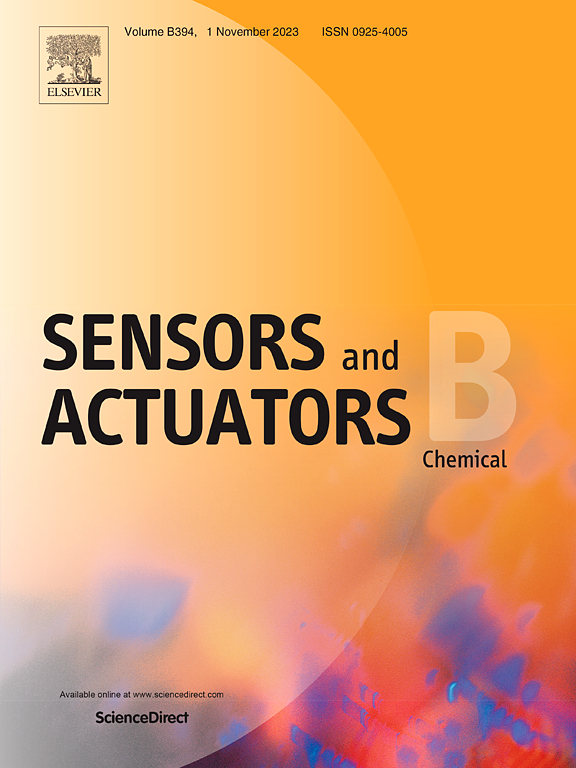Self-assembled AuNPs on niobium carbide (Nb2C) MXene-based apta-sensor for progesterone recognition in female sweat and serum sample
IF 8
1区 化学
Q1 CHEMISTRY, ANALYTICAL
引用次数: 0
Abstract
Individualized tracking of female hormones progesterone level raises a significant impact on women's health, including fertility and carcinogenic risks. Nevertheless, current methods are difficult to use indoors because they typically call for intrusive sampling or large analytical laboratory equipment. Here, we report a straightforward electrochemical biosensor based on the aptamer-target-induced displacement of strands for the automated and minimally invasive diagnostic progesterone via in situ serum and sweat monitoring. This detection screen-printed carbon electrode (SPCE) combines a reagent-less signal enhancement and 'signal-on' recognition strategy with a gold nanoparticle (AuNPs) decorated via (3-aminopropyl) triethoxysilane (APTES) functionalized Nb2C (niobium carbide) MXene nanosheets achieves high specificity and exceptional sensitivity at picomolar concentrations. The device could detect progesterone levels linearly within the 50–160 pM range, with a sensitivity of 0.159 µA pM−1 and a limit of detection (LOD) of 14 pM in PBS buffer (pH 7.4) and 17 pM in the spiked female sweat sample. Our integrated aptamer-based SPCE system was successfully demonstrated in real-time clinical samples at point-of-care testing. Aptamer modification on AuNPs-APTES-Nb2C-MXene nanosheets opens up new possibilities for biomedical and electrochemical sensing applications in progesterone detection at picomolar concentration exhibits exceptional stability, repeatability, specificity, sensitivity, and selectivity.

求助全文
约1分钟内获得全文
求助全文
来源期刊

Sensors and Actuators B: Chemical
工程技术-电化学
CiteScore
14.60
自引率
11.90%
发文量
1776
审稿时长
3.2 months
期刊介绍:
Sensors & Actuators, B: Chemical is an international journal focused on the research and development of chemical transducers. It covers chemical sensors and biosensors, chemical actuators, and analytical microsystems. The journal is interdisciplinary, aiming to publish original works showcasing substantial advancements beyond the current state of the art in these fields, with practical applicability to solving meaningful analytical problems. Review articles are accepted by invitation from an Editor of the journal.
 求助内容:
求助内容: 应助结果提醒方式:
应助结果提醒方式:


